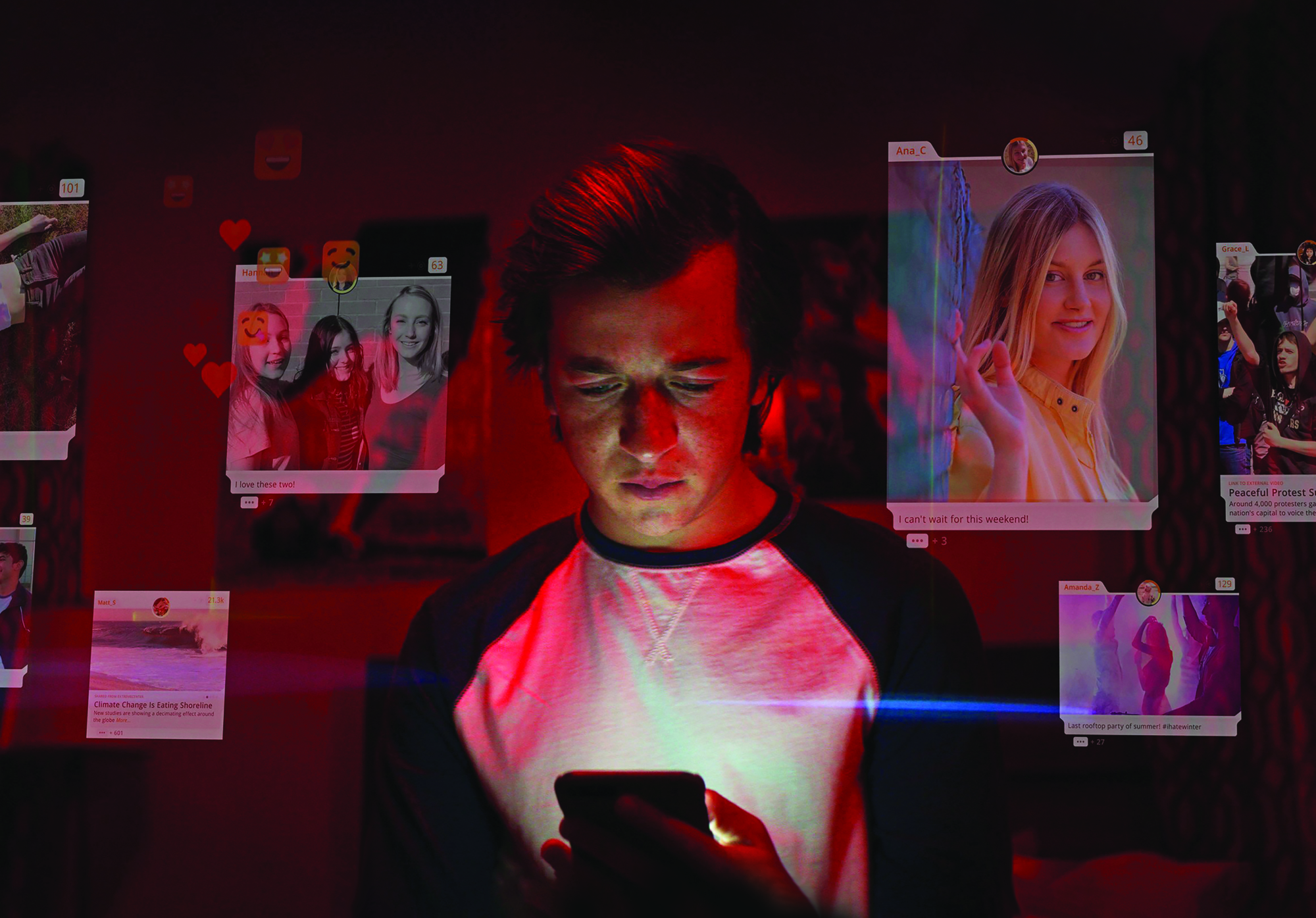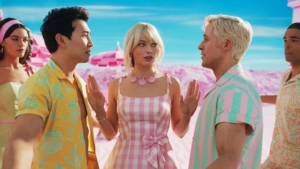Today, a majority of people on Earth have at least one active social media account, whether it be on Facebook, Twitter, Instagram or a less accessed but nonetheless popular platform such as Reddit, Snapchat or Pinterest.[1]See Simon Kemp, ‘More than Half of the People on Earth Now Use Social Media’, We Are Social website, 21 July 2020, <https://wearesocial.com/blog/2020/07/more-than-half-of-the-people-on-earth-now-use-social-media>, accessed 3 June 2021.
These services not only offer a means to keep up with family and friends, but also function as news and information aggregators; at their core, they are immensely powerful and complex tools that freely connect us with the larger world. So when Jeff Orlowski’s documentary The Social Dilemma (2020) begins by asking a series of tech experts what the precise ‘problem’ is with this technology, the sheer breadth of the question leaves them scratching their heads, struggling to come up with a succinct answer.
What emerges through the remainder of the film goes a little way towards resolving that question. Contrary to the sector’s utopian appeals to connectedness and information sharing, the less glamorous reality is that tech companies with limited oversight have developed algorithms to keep people engaged and online at any cost. Users are exposed to what they believe to be objective truth, yet are unaware that their online experience is tailored for them via machines programmed to form addictive behaviour. Essentially, we are offered a filtered version of reality based on user input, and this dynamic continues to define our interests.

At least, that’s one of the problems. Over the course of The Social Dilemma, body dysmorphia in teens rubs up against world-altering issues such as compromised election results and ethnic cleansing: widely disseminated disinformation is shown to have helped shore up oppressive regimes in places such as Turkey and the Philippines, while the sectarian violence that has led to over one million Rohingya Muslims fleeing Myanmar is linked to near-unchecked social media bias against the ethno-religious minority.[2]See ‘The Country Where Facebook Posts Whipped Up Hate’, BBC News, 12 September 2018, <https://www.bbc.com/news/blogs-trending-45449938>, accessed 3 June 2021.
Orlowski’s documentary tends to be slight in its discussion of these global issues, however. Much more central to the film is its concern with displaying the effects of social media on a ‘typical’ American family, via a fictional enactment of what tech addiction and disinformation can do to teens. Yet The Social Dilemma does offer pointers to what might happen during a major crisis like the ongoing COVID-19 pandemic, during which conspiracy theories have been given equal space and weight on social media platforms to factual reports from qualified epidemiologists and legitimate news outlets, directly impacting on societies’ capacity to manage – and defeat – the virus.[3]See Steven Aoun, ‘Pandemic Paradox: Navigating Technology in the Age of COVID-19’, Metro, no. 206, 2020, pp. 100–5.
Fake news
Controversies around the dissemination of false information on social media reached an apotheosis in the US in early January 2021, when Twitter and Facebook took the unprecedented step of removing the then-president of the United States, Donald Trump, from their platforms for repeated breaches of their terms of service.[4]See Kate Conger & Mike Isaac, ‘Inside Twitter’s Decision to Cut Off Trump’, The Age, 17 January 2021, <https://www.theage.com.au/business/companies/inside-twitter-s-decision-to-cut-off-trump-20210117-p56uqg.html>, accessed 3 March 2021. Trump had been violating these conditions throughout his four-year term, but the tipping point came when his repeated disinformation about his 2020 election loss – notably, amplified through his presidential Twitter account – led to protesters storming the Capitol Building in Washington, DC, with the intention of stopping the certification of President-elect Joe Biden’s victory.[5]See ‘US Congress in Turmoil as Violent Trump Supporters Breach Building’, BBC News, 6 January 2021, <https://www.bbc.com/news/world-us-canada-55555074>, accessed 3 June 2021.
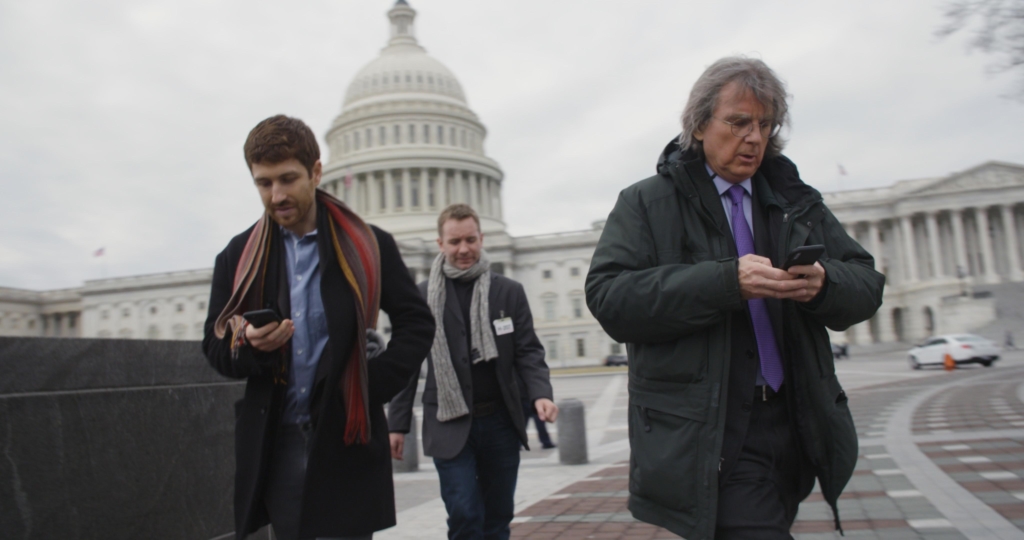
Trump has admitted on several occasions that he would not have managed to become president without social media.[6]News clips of Trump stating this fact can be found in the documentary The Cleaners. Both during his initial campaign and over the course of his administration, he used his Twitter account to amplify his agenda, relying on the platform to reach more people than he could have via traditional media. Unfiltered and unregulated speech was the backbone of Trump’s communication, even when that speech consisted of outright lies – for example, his claim that he had won the 2020 election by a vast majority and that official results were fraudulent.[7]See Michael Rowland, ‘Donald Trump Claims the US Election Is Being Stolen. Who Will Believe Him?’, ABC News, updated 7 November 2020, <https://www.abc.net.au/news/2020-11-06/donald-trump-claims-the-us-election-result-joe-biden-stolen/12856634>, accessed 3 June 2021. Amid the decision to remove the then-president from Twitter and Facebook, a concerted effort was also made to ban the accounts of many of his supporters, specifically those promoting the far-right QAnon conspiracy theory. Many users involved in the purge shifted to the more right-affiliated social media platform Parler, which was subsequently removed from the Google and Apple application stores before being temporarily taken down from the internet altogether (due to Amazon suspending its hosting).[8]See ‘Parler May Go Offline After Amazon, Apple and Google Reject Social Network’, The Guardian, 10 January 2021, <https://www.theguardian.com/us-news/2021/jan/10/apple-suspends-parler-from-app-store>, accessed 3 June 2021.
The reason Facebook and similar platforms can’t tell what is false and what is real is that social media platforms are almost completely run on code and specific algorithms, with limited to no human oversight.
Through its dramatised section, The Social Dilemma tries to explain how this kind of radicalisation can happen. In between watching skateboard ‘fails’ and looking at his crush’s Instagram feed, teenager Ben (Skyler Gisondo) is gradually introduced to the ‘extreme center’ political movement. Articulating a watered-down ‘sovereign citizen’–style rhetoric, this fictional ideology stands in for the many online fringe groups that gain traction through shared videos and recommendations. As the algorithm feeds him more content to keep him engaged, Ben quickly becomes convinced that what he’s seeing is true. As Center for Humane Technology co-founder Tristan Harris notes in the documentary, this kind of scenario is an intrinsic problem with social media algorithms – the system creates biases towards false information, and users are targeted when they are at their weakest:
Disinformation for profit is a business model. You make more money out of allowing unregulated messages to reach anyone for the best price. Facebook has trillions of these posts. They can’t know what is false and what is real.
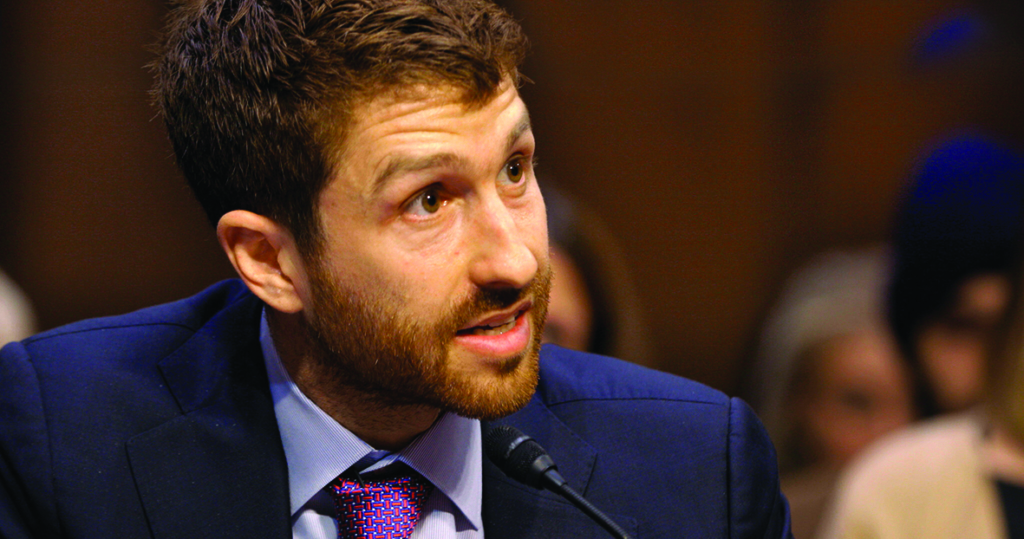
The ghost in the machine
The reason Facebook and similar platforms can’t tell what is false and what is real, as Harris puts it, is that social media platforms are almost completely run on code and specific algorithms, with limited to no human oversight. Social media companies have generally not proactively sought to identify and take down fake news, instead waiting on users to flag content for review. Yet even this review process itself is flawed, as seen in the documentary The Cleaners (Hans Block & Moritz Riesewieck, 2018), which deals specifically with this area: far too few people are employed to watch what is happening in real time on social media platforms. If one considers the hundreds of thousands of tweets, status updates, comments, images and videos being posted at any given moment, it’s clear the sheer scale of regulating popular platforms has vastly outgrown what any human workforce could take on. Add to this social media companies’ lack of transparency[9]For an overview of how social media giants Facebook, Twitter and Google responded to questions regarding their practices, see the transcript of the United States Senate open hearing on social media influence in the 2016 US election, available at <https://www.govinfo.gov/content/pkg/CHRG-115shrg27398/pdf/CHRG-115shrg27398.pdf>, accessed 3 March 2021. and their historical refusal to adequately combat disinformation on their platforms,[10]An exception of late has been posts related to COVID-19, which are now routinely flagged and fact-checked. See Bhaskar Chakravorti, ‘Social Media Companies Are Taking Steps to Tamp Down Coronavirus Misinformation – but They Can Do More’, The Conversation, 30 March 2020, <https://theconversation.com/social-media-companies-are-taking-steps-to-tamp-down-coronavirus-misinformation-but-they-can-do-more-133335>, accessed 3 June 2021. and the end user is left almost entirely at the mercy of a set of servers feeding their own habits and biases back to them in an unending loop. It seems an impossible task to put the genie back in the bottle and find a way for servers to discriminate between false or even dangerous information and the truth. As social media platforms continue to replace traditional news media as primary information sources,[11]See Peter Suciu, ‘More Americans Are Getting Their News from Social Media’, Forbes, 11 October 2019, <https://www.forbes.com/sites/petersuciu/2019/10/11/more-americans-are-getting-their-news-from-social-media/?sh=6b28b8833e17>, accessed 3 June 2021. the stakes are raised significantly. In The Social Dilemma, tech pioneer Jaron Lanier outlines the power dynamics underlying these relationships:
We have created a world where online connections have become primary, especially for younger generations – and yet in that world, when any people connect, the only way it’s financed is through a sneaky third person who is trying to manipulate those two people. It creates a culture where the meaning of communication is manipulation.

What gives The Social Dilemma most of its impact is that many of the featured talking heads were themselves in some way instrumental in engineering or designing these online platforms. For several of these interviewees, the documentary acts as a mea culpa. From Justin Rosenstein, the engineer who created the Facebook ‘like’ button, to Tim Kendall, a one-time Facebook executive and former president of Pinterest, each expert expresses the feeling that, somewhere along the line, something has gone very wrong within the machine that is social media. Harris views the model that platforms now use as one of the primary factors causing social media addiction and related psychosocial issues, outlining it as follows:
• Engagement: Social media companies want you to spend time on their platform. In order to be profitable, they need to keep the user’s attention for as long as possible. The longer a user is on a platform, the more opportunity advertisers have to place their products on the user’s timeline.
• Growth: Networks need users to invite their friends to use the platform as often as possible. Whether they do this through tagging, sharing or generating notifications, the user is complicit in expanding the reach of an application.
• Advertising: The end goal of most free social media platforms is to keep people on them for long enough to be targets for specific advertising. Advertising is generated through keyword searches and predicting the behaviour and interests of the user based on the basic information they provide the company, such as age, location, political affiliation and gender.
Through this model, the consumer becomes the product. Like targeted news, targeted advertising is governed by sophisticated algorithms; the user feeds the machine information, and the machine in turn creates an evolving and predictive model of the user.
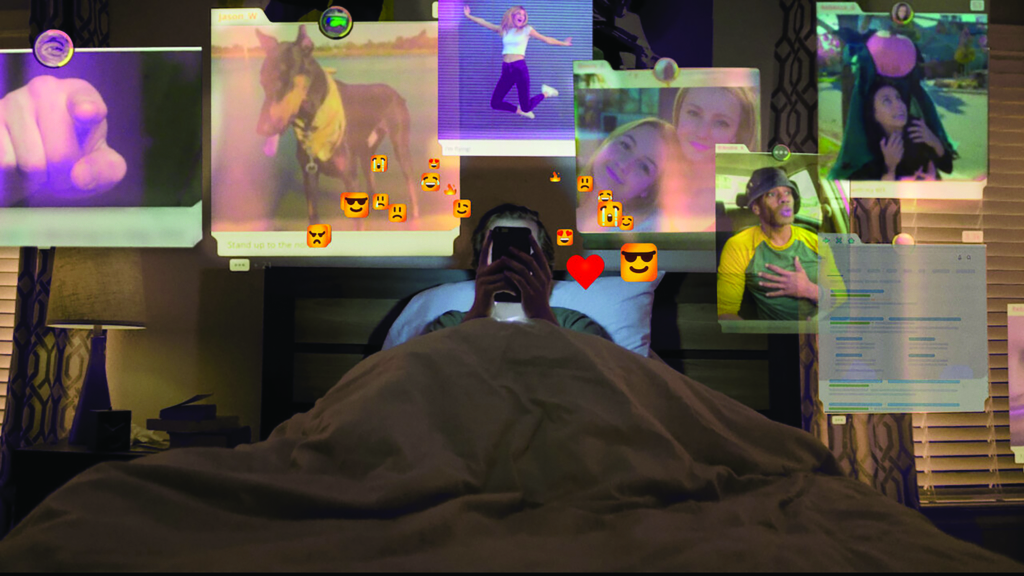
The emerging mind
Most social media networks have a minimum user age of thirteen, but many members of Generation Z are already well acquainted with these platforms by that age.[12]See ‘Under-age Social Media Use “on the Rise”, Says Ofcom’, BBC News, 29 November 2017, <https://www.bbc.com/news/technology-42153694>, accessed 3 June 2021. In The Social Dilemma’s dramatised sequences, the youngest member of the family with a smartphone and access to Instagram-like platforms is eleven-year-old Isla (Sophia Hammons). Shown posting selfies and waiting impatiently for engagement, her character represents how young people can become psychologically dependent on this technology. More broadly, she represents a generation that has been brought up in the digital landscape – a generation that, Stanford University addiction specialist Anna Lembke notes in the documentary, is neurologically primed for addictive tendencies: ‘Social media is a drug. We have a biological imperative to connect with other people that directly effects the release of dopamine in the [neurological] reward pathway.’ Former Google executive Joe Toscano similarly makes the point that users crave positive intermittent reinforcement, and that applications are designed like slot machines: each time a user drags the screen down to refresh their feed, they are rewarded with new content. This design is not accidental.
Alongside the dopamine rush brought about by receiving a compliment on social media, however, is the possibility of cyberbullying and its attendant negative effects on mental health (something only fleetingly touched on in the documentary). A number of applications also offer the capacity to radically alter users’ appearance, and these filtered selfies are increasingly the norm for personal images posted online. Instagram and Facebook both have built-in image filters, whereas applications like Snapchat (a platform that is especially popular with younger teens) exist primarily to showcase such gimmicks. With the touch of a button, a selfie can be transformed to increase the size of a user’s eyes, thin their nose, add make-up, add or subtract body fat, or add muscle tone. Young people no longer solely compete with standards of beauty that have traditionally inhabited the media; they are also competing with artificial standards of beauty that they can project on themselves with filters. The Social Dilemma notes that young women are seeking surgery to look more like their filtered images, a phenomenon defined by some psychologists as Snapchat dysmorphia.[13]See Elle Hunt, ‘Faking It: How Selfie Dysmorphia Is Driving People to Seek Surgery’, The Guardian, 23 January 2019, <https://www.theguardian.com/lifeandstyle/2019/jan/23/faking-it-how-selfie-dysmorphia-is-driving-people-to-seek-surgery>, accessed 3 June 2021.
Fewer young people are actively dating, getting their driver’s licence and participating in social activities; as the documentary suggests, social media is stymieing their passage into adulthood.
Orlowski’s film also reveals that, in tandem with increasing social media usage, the number of young women self-harming has risen at an alarming rate. For example, since 2011, the percentage of pre-teen girls who engage in self-harm has risen by a staggering 189 per cent in the US. Frightening statistics also show that, among American pre-teen girls, the suicide rate is up by 151 per cent.[14]See Wendy Tuohy, ‘“It Makes You Want to Throw Your Phone in the Bin”: The Film Turning Teens Off Social Media’, The Age, 27 September 2020, <https://www.theage.com.au/national/victoria/it-makes-you-want-to-throw-your-phone-in-the-bin-the-film-turning-teens-off-social-media-20200926-p55zhi.html>, accessed 3 June 2021. Experts note that Generation Z is also stalling in other areas: fewer young people are actively dating, getting their driver’s licence and participating in social activities; as the documentary suggests, social media is stymieing their passage into adulthood, and a whole generation is becoming more fragile and depressed. Kendall does not mince words in the documentary: ‘These services are killing people.’ Elsewhere, Harris points out that social media acts as a ‘digital pacifier atrophying our own ability to deal with loneliness’.
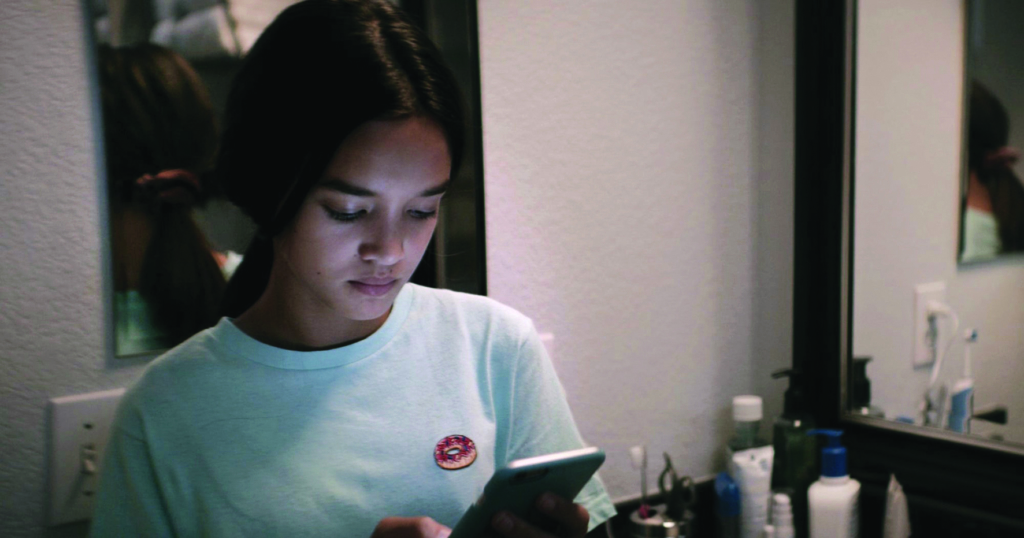
What is the solution?
Just as it is seemingly impossible to summarise the exact problem with social media, the notion that there can be a solution to the myriad of issues that the technology poses is left amorphous and vague by Orlowski’s documentary. Harris and Lanier both express a belief that pushing for a more humane kind of social media, in which the user is less manipulated, will solve some of the problems, however neither offers a firm suggestion as to how this might be achieved – in the meantime, Lanier favours the more direct approach of deleting all social media platforms from our lives altogether. Other experts believe that the minimum age for these applications needs to be raised from thirteen to at least sixteen. There seems to be a consensus among many tech experts that frank discussions with children and teenagers about social media are essential, and that parents need to set limits on screen time for younger users. The documentary skews towards solutions for younger people, but doesn’t effectively address (equally compulsive) adult use of social media.
Ultimately, The Social Dilemma cannot articulate a solution or even a set of strategies that would be effective for the vast user base of social media applications. Turning off notifications or limiting screen time are both good ideas, but they place the onus back on the user to solve issues that have been created by these powerful organisations. The lack of regulation these companies are subjected to is astonishing, given the effects they have on societies all over the world. As the documentary reveals, people have designed these online machines to effectively treat humans as predictable commodities. Yet questions hang in the air, unanswered: What do we do when society has essentially been psychologically hacked? How do we take ourselves out of a machine that is specifically designed to keep us engaged? We can ask for a more ethical model of interaction, but do we even know what that would look like? By leaving these crucial issues unresolved, The Social Dilemma poses questions that it fails to address. Orlowski and his writers try to finish the documentary on a positive beat, but such efforts feel somewhat disingenuous and naive in the context of the concerning information that has been presented. Perhaps the greatest dilemma of social media is that we are already lost in the machine – and with major tech companies having little motivation to change their vastly profitable models, extracting ourselves seems a nigh on impossible task.
Endnotes
| 1 | See Simon Kemp, ‘More than Half of the People on Earth Now Use Social Media’, We Are Social website, 21 July 2020, <https://wearesocial.com/blog/2020/07/more-than-half-of-the-people-on-earth-now-use-social-media>, accessed 3 June 2021. |
|---|---|
| 2 | See ‘The Country Where Facebook Posts Whipped Up Hate’, BBC News, 12 September 2018, <https://www.bbc.com/news/blogs-trending-45449938>, accessed 3 June 2021. |
| 3 | See Steven Aoun, ‘Pandemic Paradox: Navigating Technology in the Age of COVID-19’, Metro, no. 206, 2020, pp. 100–5. |
| 4 | See Kate Conger & Mike Isaac, ‘Inside Twitter’s Decision to Cut Off Trump’, The Age, 17 January 2021, <https://www.theage.com.au/business/companies/inside-twitter-s-decision-to-cut-off-trump-20210117-p56uqg.html>, accessed 3 March 2021. |
| 5 | See ‘US Congress in Turmoil as Violent Trump Supporters Breach Building’, BBC News, 6 January 2021, <https://www.bbc.com/news/world-us-canada-55555074>, accessed 3 June 2021. |
| 6 | News clips of Trump stating this fact can be found in the documentary The Cleaners. |
| 7 | See Michael Rowland, ‘Donald Trump Claims the US Election Is Being Stolen. Who Will Believe Him?’, ABC News, updated 7 November 2020, <https://www.abc.net.au/news/2020-11-06/donald-trump-claims-the-us-election-result-joe-biden-stolen/12856634>, accessed 3 June 2021. |
| 8 | See ‘Parler May Go Offline After Amazon, Apple and Google Reject Social Network’, The Guardian, 10 January 2021, <https://www.theguardian.com/us-news/2021/jan/10/apple-suspends-parler-from-app-store>, accessed 3 June 2021. |
| 9 | For an overview of how social media giants Facebook, Twitter and Google responded to questions regarding their practices, see the transcript of the United States Senate open hearing on social media influence in the 2016 US election, available at <https://www.govinfo.gov/content/pkg/CHRG-115shrg27398/pdf/CHRG-115shrg27398.pdf>, accessed 3 March 2021. |
| 10 | An exception of late has been posts related to COVID-19, which are now routinely flagged and fact-checked. See Bhaskar Chakravorti, ‘Social Media Companies Are Taking Steps to Tamp Down Coronavirus Misinformation – but They Can Do More’, The Conversation, 30 March 2020, <https://theconversation.com/social-media-companies-are-taking-steps-to-tamp-down-coronavirus-misinformation-but-they-can-do-more-133335>, accessed 3 June 2021. |
| 11 | See Peter Suciu, ‘More Americans Are Getting Their News from Social Media’, Forbes, 11 October 2019, <https://www.forbes.com/sites/petersuciu/2019/10/11/more-americans-are-getting-their-news-from-social-media/?sh=6b28b8833e17>, accessed 3 June 2021. |
| 12 | See ‘Under-age Social Media Use “on the Rise”, Says Ofcom’, BBC News, 29 November 2017, <https://www.bbc.com/news/technology-42153694>, accessed 3 June 2021. |
| 13 | See Elle Hunt, ‘Faking It: How Selfie Dysmorphia Is Driving People to Seek Surgery’, The Guardian, 23 January 2019, <https://www.theguardian.com/lifeandstyle/2019/jan/23/faking-it-how-selfie-dysmorphia-is-driving-people-to-seek-surgery>, accessed 3 June 2021. |
| 14 | See Wendy Tuohy, ‘“It Makes You Want to Throw Your Phone in the Bin”: The Film Turning Teens Off Social Media’, The Age, 27 September 2020, <https://www.theage.com.au/national/victoria/it-makes-you-want-to-throw-your-phone-in-the-bin-the-film-turning-teens-off-social-media-20200926-p55zhi.html>, accessed 3 June 2021. |
